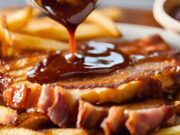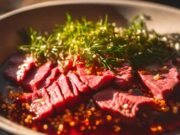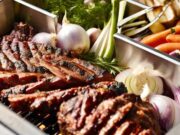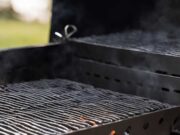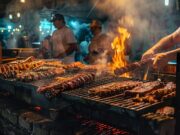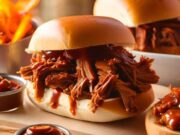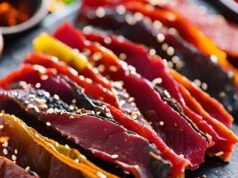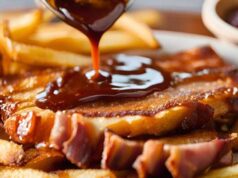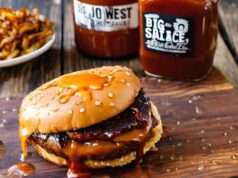- Key Takeaways:
- Understanding Brisket: Cuts and Characteristics
- Essential Tools for BBQ Brisket Mastery
- Preparing Your Brisket: Trimming Tips
- Seasoning Your Brisket: Rubs and Marinades
- Brisket Injection: Should You Do It?
- The Ideal Temperature for Smoking Brisket
- Smoking Techniques: Low and Slow vs. Hot and Fast
- Wrapping Techniques: Foil, Butcher Paper, or No Wrap?
- Resting Your Brisket: Why It Matters
- Brisket Recipes: Variations to Try
- Common Mistakes to Avoid When Smoking Brisket
- Frequently Asked Questions
BBQ brisket is widely regarded as the pinnacle of smoked meats, providing a remarkable balance of flavor and tenderness that can enhance any gathering.
Whether you are an experienced pitmaster or a novice eager to learn, this guide will equip you with the essentials needed to achieve brisket perfection.
You will gain insights into selecting the right cut and essential tools, as well as mastering seasoning, smoking techniques, and resting methods. This guide offers practical tips and delicious recipes to help you impress your friends and family with your newly acquired brisket skills.
Key Takeaways:

- Understanding the different cuts and characteristics of brisket is essential for mastering BBQ brisket.
- Properly preparing and seasoning your brisket, as well as maintaining the ideal temperature and smoking techniques, are key to achieving perfectly smoked beef.
- Experimenting with different wrapping techniques and using a meat thermometer to ensure a proper resting time are important factors to consider for a successful brisket cook.
Understanding Brisket: Cuts and Characteristics
Understanding brisket starts with recognizing its unique cuts and characteristics, which significantly influence the cooking process and the final flavor profile of this cherished smoked meat.
The brisket consists of various muscles, primarily the Hunk O’ Flat and Hunk O’ Point, each providing distinct textures and flavors. The fat cap on top is essential for moisture retention during smoking, while the marbling within the brisket is critical for achieving the tender texture that BBQ enthusiasts seek.
Furthermore, being knowledgeable about different beef grades, such as Wagyu, enables you to select the best brisket for your cooking endeavors.
Essential Tools for BBQ Brisket Mastery
To master BBQ brisket, you must possess the right tools, as they significantly contribute to achieving the perfect smoked flavor and texture. A reliable smoker is paramount; controlling the smoker temperature is crucial for cooking brisket low and slow, ensuring it becomes tender and juicy. A selection of effective brisket rubs, along with the option for brisket injection, can enhance the flavor profile while maintaining moisture during the smoking process. Understanding various cooking methods and how each tool plays a role can elevate your brisket game.
To further enhance your smoking experience, a quality meat thermometer is essential. It allows you to monitor the internal temperature of the brisket accurately, preventing undercooking or overcooking. With various types available, digital thermometers provide quick readings, while probe thermometers can offer continuous monitoring throughout the smoking session.
If you’re looking to add an extra layer of flavor, a marinade injector can distribute liquid seasoning deep into the meat, ensuring each bite bursts with taste. Mastering these tools not only influences your overall outcome but also nurtures the skills necessary for achieving BBQ excellence.
Preparing Your Brisket: Trimming Tips
Preparing your brisket properly begins with recognizing the significance of fat cap trimming, which can greatly influence both the flavor and texture of the final product. The fat cap should be trimmed to enhance seasoning absorption and ensure even cooking, while still retaining enough fat to maintain moisture during the smoking process. Effective brisket preparation lays the groundwork for an exceptional barbecue experience and leads to enjoyable leftovers that can be utilized in various dishes.
When trimming the fat cap, it is advisable to use a sharp knife with a flexible blade to gain better control over the process. For different cuts, such as the point or flat, understanding the thickness and placement of the fat will help you achieve the right balance.
It is important to note that a quarter-inch layer of fat is generally adequate for moisture retention while allowing for smoke penetration. To further retain moisture during cooking, consider wrapping the brisket in butcher paper or foil halfway through the smoking process.
For leftover brisket, think creatively—shred it for tacos, slice it for sandwiches, or incorporate it into a rich chili for an elevated twist. This approach not only minimizes waste but also enhances your culinary repertoire.
Seasoning Your Brisket: Rubs and Marinades
The seasoning of your brisket is a crucial step that enhances the meat’s natural flavors and contributes significantly to the overall barbecue experience, with various rubs and marinades playing a pivotal role.
Selecting the right blend of spices, such as a renowned brisket rub or a sweet and spicy marinade, allows you to explore flavor profiles that can transform the dish entirely. The science behind flavor absorption indicates that allowing the rub or marinade to penetrate the meat over time not only tenderizes it but also infuses it with complex tastes that are truly irresistible.
Balancing the salty, sweet, sour, and spicy elements is essential for achieving harmony on the palate, ensuring that no single flavor overwhelms the others. Moreover, the timing and method of seasoning greatly influence the cooking process, as the heat interacts with the rubs and marinades to create a delicious crust while locking in moisture within the brisket. This thoughtful approach to seasoning ultimately highlights the depth of flavor you can achieve.
Brisket Injection: Should You Do It?
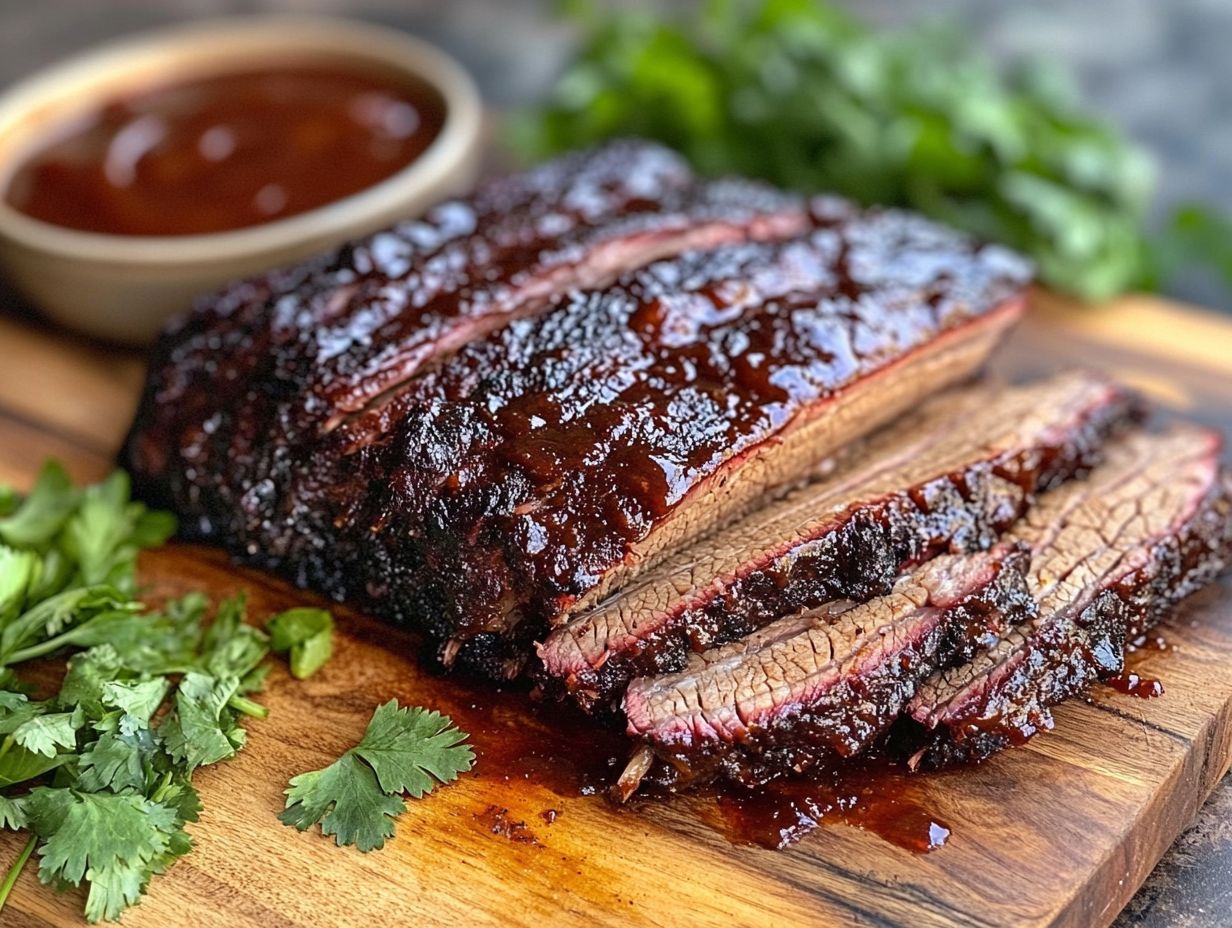
Brisket injection is a technique that many pitmasters discuss, as it can significantly improve moisture retention and contribute to a tender brisket. However, its necessity varies based on personal preference and cooking style. By injecting a flavorful liquid directly into the brisket, you can ensure that the meat remains juicy and full of flavor, especially during longer cooking times. Understanding when and how to use brisket injection is crucial for achieving the desired results without overshadowing the meat’s natural taste.
The benefits of brisket injection become particularly evident during longer smoking sessions, where the risk of d drying out is greater. If you aim to enhance the experience, effective injection mixtures might include a blend of beef broth, Worcestershire sauce, and spices such as garlic powder and black pepper. This combination not only promotes tenderness but also infuses the brisket with a robust flavor profile.
It’s important to note that while injection can enhance moisture and taste, using overly salty or overpowering mixtures can mask the brisket’s inherent qualities. Therefore, striking a balance is essential to maintaining the integrity of the meat itself.
The Ideal Temperature for Smoking Brisket
Determining the ideal temperature for smoking brisket is critical to achieving that tender texture and rich flavor that BBQ enthusiasts desire. The key often lies in the ‘low and slow’ cooking method. Most pitmasters recommend maintaining a consistent smoker temperature of around 225°F to 250°F, as this allows the meat to cook evenly while breaking down tough connective tissues.
Understanding the science behind smoker temperature and its impact on the cooking process is essential for anyone aiming to perfect their brisket.
Maintaining this temperature range is not just about achieving the correct doneness; it also enhances the overall flavor profile of the meat. For those serious about BBQ, utilizing a reliable meat thermometer will help monitor the internal meat temperature while ensuring that the smoker remains steady.
Regular adjustments to airflow and wood types can significantly influence both cooking time and the quality of the final product. Precision is key; temperature fluctuations can result in a rubbery texture or dry meat.
With careful attention, BBQ enthusiasts can elevate their smoking techniques and produce brisket that rivals the finest barbecue establishments.
Smoking Techniques: Low and Slow vs. Hot and Fast
In terms of smoking brisket, the choice between low and slow versus hot and fast techniques can significantly impact the final product, making it crucial for aspiring pitmasters to understand these methods.
The low and slow approach is preferred for its effectiveness in breaking down collagen, resulting in a juicy brisket with the tenderness that is ideal for barbecue contests. On the other hand, hot and fast smoking can produce quicker results but requires careful attention to ensure the meat does not dry out.
Each technique presents unique advantages, depending on your desired outcome and personal preferences as a cook.
1. Setting Up Your Smoker
Setting up your smoker properly is a crucial first step in the smoking process, as it directly impacts the flavor and texture of your brisket. A seasoned barbecue enthusiast understands that maintaining the right smoker temperature is key; for optimal results, ensure your smoker reaches a stable temperature before placing the brisket inside. Proper setup includes selecting the right wood for smoking and regulating airflow to facilitate even cooking.
To begin, select a wood type that complements the natural flavors of the brisket. Options such as hickory, mesquite, or fruit woods like apple and cherry can enhance the meat’s taste. Each type of wood contributes a unique profile, so it’s beneficial to experiment to find your preferred combination.
Once you’ve chosen your wood, manage the airflow by adjusting the intake and exhaust dampers. This balance is essential for controlling the heat and maintaining a consistent temperature, ideally between 225°F and 250°F. Keeping a reliable thermometer handy will help ensure you stay on track for achieving that perfectly smoked brisket.
2. The Smoking Process: Step-by-Step Instructions
The smoking process for brisket demands your careful attention to detail, following step-by-step instructions to ensure a delicious end product that truly showcases barbecue culture at its finest. Begin by placing the seasoned brisket in the smoker, monitoring the smoker temperature closely to maintain consistency throughout the cooking process. The cooking time for the brisket will vary based on its size and weight, making it essential for you to check for tenderness as it cooks.
Experienced pitmasters recommend using a meat thermometer to gauge the internal temperature, aiming for around 195-205 degrees Fahrenheit to achieve that sought-after melt-in-your-mouth texture. As the smoke envelops the brisket, patience is crucial; this process typically takes anywhere from 10 to 14 hours.
To ensure the meat is perfectly tender, it is advisable to use the probe test. This involves inserting a skewer or toothpick into the brisket to assess resistance. When it slides in without much effort, that indicates the brisket is ready to be removed from the heat. Allowing it to rest for at least an hour before slicing will enable the juices to redistribute, ensuring every bite is as flavorful and moist as possible.
Wrapping Techniques: Foil, Butcher Paper, or No Wrap?

Wrapping your brisket during the smoking process is a technique that significantly impacts moisture retention and tenderness, commonly referred to as the ‘brisket crutch’. You may find that pitmasters often debate the merits of using foil, butcher paper, or choosing not to wrap at all, as each method presents distinct advantages.
Wrapping in foil can create a moist environment for the brisket, while butcher paper promotes better bark development, which can yield competitive results.
However, each wrapping technique has its drawbacks. Foil can trap moisture too efficiently, resulting in a less pronounced bark and a softer exterior texture on the meat. On the other hand, leaving the brisket unwrapped allows for a crustier exterior but carries the risk of drying out the meat if it remains on the smoker for too long.
To achieve optimal results, it is essential to understand when to utilize each method based on the cooking stage and the desired end result. For example, wrapping early in the cooking process may help retain moisture, while a later wrap can enhance texture without compromising the integrity of the bark.
Resting Your Brisket: Why It Matters
Resting your brisket after cooking is a critical step that should not be overlooked, as it directly impacts the final texture and flavor of the meat. Allowing the brisket to rest aids in moisture retention, ensuring that every slice is brimming with flavor. This resting period enables the juices to redistribute throughout the meat, resulting in each bite being tender and delicious.
Typically, a brisket should rest for at least one hour, although some experts recommend allowing it to sit for two or even four hours, depending on its size. This resting phase creates a more enjoyable eating experience, as the natural juices have time to settle back into the muscle fibers. Not only does this enhance the overall quality of the brisket, but it also prevents valuable moisture from escaping during slicing, which can lead to dry and less flavorful pieces.
By prioritizing this resting phase, you can significantly elevate the satisfaction levels of your final dish.
Brisket Recipes: Variations to Try
Exploring different brisket recipes presents an excellent opportunity for you to experiment with flavors and techniques, showcasing the versatility of this beloved cut of beef. From classic smoked brisket recipes that highlight traditional Texas BBQ methods to innovative variations that incorporate flavors reminiscent of pulled pork, you have countless options to satisfy every palate.
Engaging in barbecue contests can inspire you to create unique brisket variations that push the boundaries of flavor and presentation.
These culinary adventures can encompass rich, savory rubs featuring smoked paprika and garlic or sweet glazes that introduce exotic ingredients like pineapple or mango. The choice of cooking techniques, whether slow-smoking over oak wood or utilizing a pressure cooker for quicker results, can significantly influence the final dish.
Each recipe serves as a canvas for your creativity, allowing you to blend spices, add marinades, or explore regional influences that enhance the natural beefy flavor. As competitors in barbecue contests understand, the secret lies in balancing tenderness with a flavorful crust, making every brisket variant a potential award-winning masterpiece.
Common Mistakes to Avoid When Smoking Brisket
When smoking brisket, even seasoned pitmasters can encounter common mistakes that may compromise the quality of the final product, making it essential for you to be aware of these pitfalls. Issues such as improper temperature management and neglecting the importance of resting the meat can lead to unsatisfactory outcomes. By incorporating brisket tips and best practices, you can ensure a successful cooking experience and elevate your smoked beef to a whole new level.
Both novice and experienced chefs often underestimate the significance of wood selection, which can create an imbalance in flavor. Choosing the wrong type of wood may overpower the natural taste of the meat or leave it lacking in flavor.
Additionally, failing to trim the brisket correctly can introduce excessive fat, resulting in a greasy final dish rather than a tender and flavorful one. Finding the right balance is crucial, as it will not only enhance the flavor but also improve the overall texture of the brisket.
Maintaining a consistent cooking temperature and utilizing a reliable meat thermometer are vital steps for achieving perfect doneness.
Frequently Asked Questions
What is BBQ brisket?
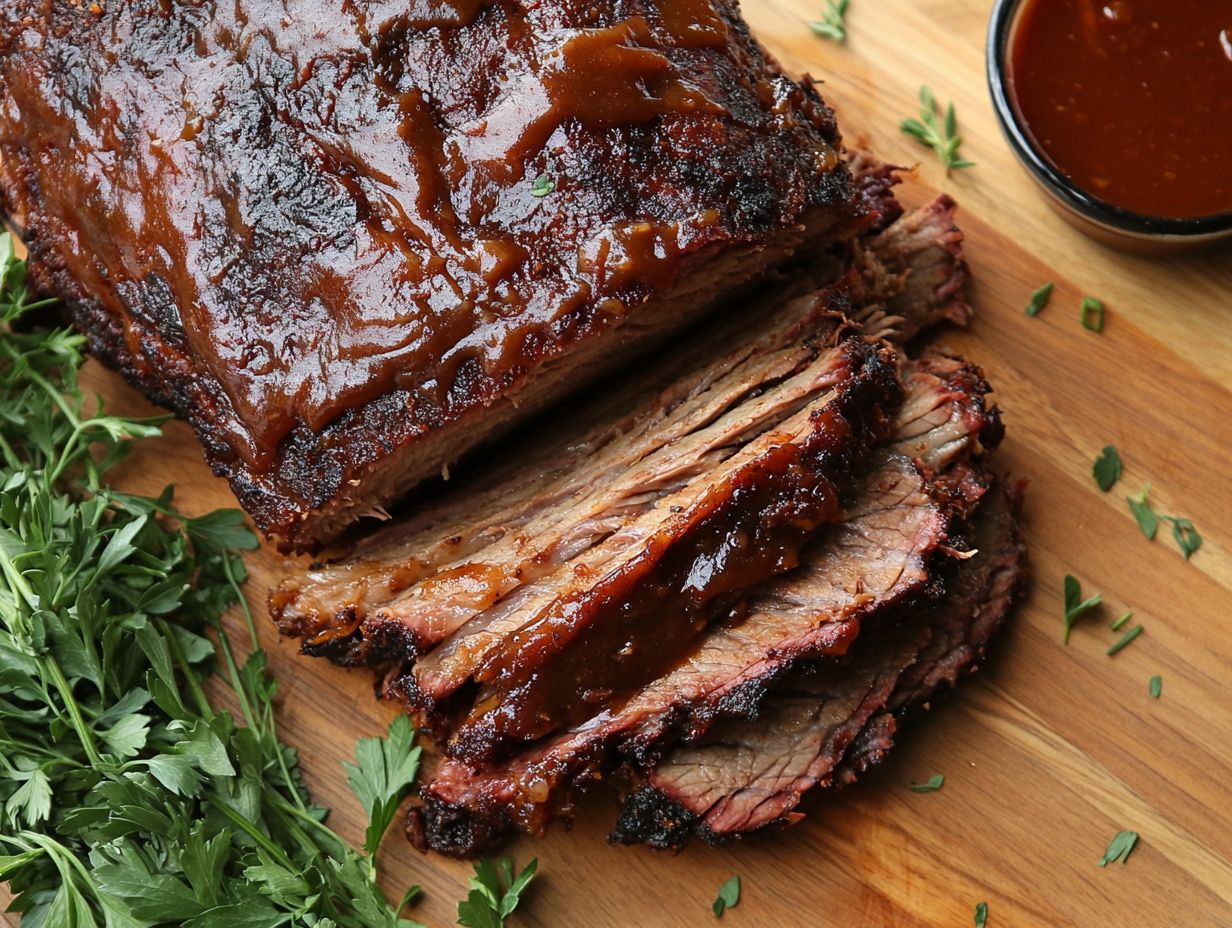
BBQ brisket is a type of smoked beef dish that is cooked low and slow, resulting in a tender, juicy, and flavorful cut of meat. It is a staple in many BBQ restaurants and competitions.
What are some tips for mastering BBQ brisket?
Some tips for mastering BBQ brisket include selecting a good quality cut of meat, using a flavorful dry rub, maintaining a consistent temperature while smoking, and allowing the meat to rest before slicing.
What is the best cut of beef for BBQ brisket?
The best cut of beef for BBQ brisket is the “packer cut,” which includes both the point and flat parts of the brisket. This cut allows for a good balance of lean and fatty meat, resulting in a tender and flavorful brisket.
How long does it take to smoke a BBQ brisket?
The cooking time for a BBQ brisket can vary depending on the size and thickness of the cut, as well as the type of smoker being used. On average, it can take anywhere from 12-16 hours to smoke a brisket at a temperature of 225-250 degrees Fahrenheit.
What are some popular recipes for BBQ brisket?
Some popular recipes for BBQ brisket include classic Texas-style with a simple salt and pepper rub, Kansas City-style with a sweet and tangy sauce, and Memphis-style with a dry rub and vinegar-based mop sauce.
Can I substitute beef with another type of meat for BBQ brisket?
While brisket is traditionally made with beef, you can substitute it with other types of meat such as pork or turkey. However, keep in mind that the cooking times and methods may vary depending on the type of meat used.








